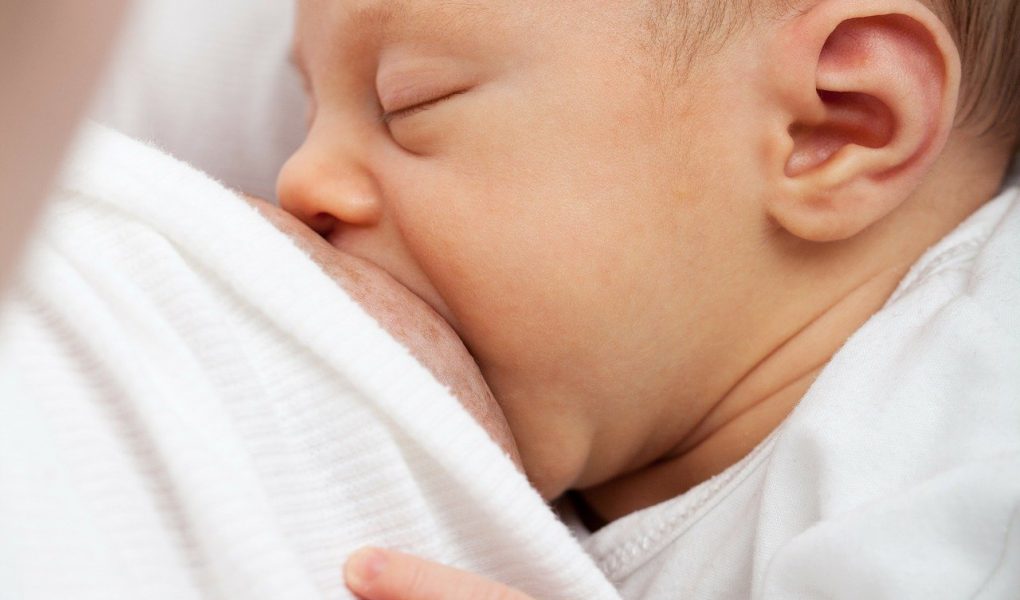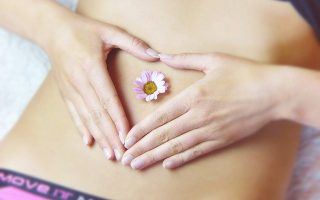Disclosure: This post may include affiliate links through the Amazon affiliate program or other affiliate partnerships. If you click on a link and buy something, I may receive a commission, at no additional cost to you. You can read more boring disclosure details in my disclosure and privacy policy.
If you suffer often from plugged milk ducts or mastitis, there are steps you can take to prevent it from reoccurring. Follow this simple advice to avoid future plugged ducts or mastitis!
Mastitis sucks. Plugged milk ducts suck. I’m guessing you, the reader, are well aware of this, or you would not be reading this blog post!
Whether you are an expecting or new mom who is simply curious about how to avoid the dreaded mastitis, or a veteran breastfeeding mom who is sick. and. tired. of mastitis, this post is for you!
These tips will help you address the underlying issues you may not realize could be contributing to plugged milk ducts, which can develop into mastitis.
If you are suffering from a plugged milk duct right now, you may want to read Tips on Combatting a Plugged Milk Duct.
1. See a lactation consultant
I’m sorry that this probably isn’t what you want to hear, or if you have heard this advice a million times. It’s for good reason – seeing a lactation consultant will automatically rule out a ton of reasons that may be contributing to mastitis, such as tongue-tie or a poor latch.
If your baby has a poor latch, this can contribute to frequently plugged milk ducts because your baby is unable to remove milk from the breasts effectively.
You may think that if your baby has a tongue-tie or a poor latch, you would know already. This isn’t necessarily true, as your baby may not show the typical signs of poor weight gain or fussiness. Even if you feel breastfeeding is going well, seeing a LC will always be time well spent.
The LC will be able to evaluate your baby’s latch and give you important tips on breastfeeding in general. Even if you are exclusively pumping, a LC will still be able to help you evaluate your pumping routine, such as an ideal pumping schedule and using the correct phalange sizes.
2. Wear the right kind of bra
I see lots of underwire nursing bras advertised to moms as a way to make them feel beautiful and claim their femininity post-baby. While there is a time and a place for underwire nursing bras, such as a wedding or date night, you should generally avoid underwire bras if you are breastfeeding.
Underwire bras, especially those that do not fit properly, can hinder blood flow and compress the milk ducts.
The same goes for sports bras – the tight-fitting nature of sports bras can compress the milk ducts and ultimately lead to plugged milk ducts. I’ve seen ‘life hacks’ where moms recommend not buying nursing bras at all and instead just lifting the sports bra over the breast during feedings. This is ok to do maybe once in a blue moon after a workout, but not on a regular basis.
So what bra should you wear? Soft, comfy bras that move with you and provide great access for nursing are best. My favorite bra by far is the French Terry by Kindred Bravely. It is incredibly soft and comfortable for both sleeping and wearing around the house… and in public. I appreciate that it doesn’t have padding since I prefer to use my own reusable nursing pads.
If you’re on the fence about the Kindred Bravely bra, don’t be; they have an excellent 90-day return policy for all unworn items. They are also committed to helping you find the perfect fit at no extra cost to you. I discovered my three bras didn’t fit after my first two weeks of nursing, and they sent me new ones that fit correctly, free of charge. I got to keep the worn, washed, nipple-cream stained bras. (Click here for 20% off your first purchase! Exclusions may apply.)
3. Maintain a consistent breastfeeding schedule
Before you click away at the word “schedule”, hear me out – I don’t mean that you have to schedule your baby’s feedings to avoid mastitis. This advice applies to on-demand and scheduled feeders.
Specifically, I mean that you cannot suddenly drop a feeding or pumping time. This includes overnight. If your body is used to generally nursing around a certain time, your breasts have learned to make milk for that time thanks to the supply-and-demand nature of breastfeeding. If you decide not to pump on your date night, your boobs don’t know that you are going on a date, so they will produce milk for your baby anyway. Failing to remove the milk from the breast either through nursing or pumping can result in 1) engorgement 2) decreased supply or 3) plugged milk ducts or mastitis.
This is actually how I ended up with mastitis; my baby had a lot of trouble nursing initially, so I was advised by my lactation consultant to pump for 10 minutes after feeding to supplement her direct latch. At the next visit, my LC told me I didn’t need to pump anymore as my baby’s latch had improved and she was gaining weight well.
So, I stopped pumping for those 10 minutes after each feeding. Sure enough, I got mastitis the next day. I had inevitably created an oversupply and wasn’t careful about how I taught my body that extra milk wasn’t needed.
A similar situation happened to a good friend of mine; she was used to waking up 2-3 times a night to feed her son. When she needed to sleep train him for a variety of reasons, when he suddenly started sleeping through the night, she got mastitis.
Learn from our mistakes! Don’t suddenly drop a feeding or pumping – any reduction in feeding must be done gradually. If you are particularly prone to mastitis, you might want to think twice about sleeping in and letting your husband give the baby a bottle, or skipping pumping after a date night.
4. Use the right kind of nursing pads
If you use disposable nursing pads, and find yourself getting mastitis often, you might want to consider switching to reusable cloth pads.
Disposable nursing pads aren’t ideal because it’s basically a diaper for your nipple – they’re absorbent, but not breathable at all. This traps moisture, hot air, sweat, and bacteria against your nipples, ultimately leading to mastitis.
I use these nursing pads and find that they were very absorbent and comfortable. If you’ve heard that cloth nursing pads are less absorbent than disposables, I’m convinced that’s a myth. I have a very strong let down (as in, if I forget to wear nursing pads I wake up in the morning in a puddle of my own milk…), and I’ve never had a problem with these leaking.
5. Give your nipples the TLC they deserve
So, how can breastfeeding moms be kind to their nipples?
After you finish feeding or pumping, rub in the few drops of breastmilk left on your nipples. Breastmilk has amazing natural antibacterial properties that will fight mastitis-causing bacteria! After rubbing in the breastmilk, take a few seconds and let them air dry.
If your nipples are cracked, itchy, sore, etc, use a natural nipple cream like this one by MotherLove, or even coconut oil. I cannot recommend this stuff enough – it is essential that you use a nipple cream that still allows your nipples to breathe after it is applied.
Stay away from the lanolin nipple cream made by Lansinoh – it’s far too thick and can actually lead to plugged milk ducts because it can trap in harmful bacteria. Lansinoh actually has a paid relationship with hospitals, which is why that little purple tube will be handed to you right after you deliver. Just because it’s given out by the hospital doesn’t mean it is what is best for you!
6. Change up your sleep habits
If at all possible, avoid sleeping in a bra to give your nipples the time they need to breathe and prevent trapping in harmful bacteria.
Trust me, I get why many breastfeeding women wear a bra with nursing pads to sleep – it’s no fun waking up in a wet t-shirt! But, the extra laundry is totally worth it if this one simple step helps you prevent mastitis. Whenever I can a plugged milk duct coming on, sleeping without a bra usually helps it disappear by the next day.
Also, avoid sleeping on your stomach (a.k.a., avoid sleeping on your boobs and by extension, milk ducts). I’m sorry if you’re a stomach sleeper who has been waiting until after pregnancy to get comfy… if you’re prone to clogged milk ducts, you’ll want to hold off on the stomach sleeping until your baby is weaned.
7. Avoid switching suddenly to exclusive pumping
This advice does not apply to recurring mastitis issues, obviously, but it is worth saying to help you avoid getting mastitis even once.
There may come a time in your breastfeeding journey where you realize that direct breastfeeding is not working out, but you still want to provide milk for your baby. Like, for example, you may be a working mother whose baby has developed some exhausting behaviors for your two feedings at home during the day. You may decide to switch to exclusive pumping for all feedings, rather than fight through your baby biting every time you try to feed him.
If you decide to switch to exclusively pumping, avoid going cold turkey. Do not suddenly stop nursing all at once. Instead, make it a gradual process.
This is because the baby is much more efficient at removing milk from the breast than the pump. So, if you are suddenly only pumping, your body may inevitably produce too much milk, resulting in a plugged milk duct followed by mastitis.
Final Thoughts
If you have had mastitis before, and get that familiar achy feeling in one of your boobs, be sure to follow these tips for treating a plugged milk duct naturally.
If I have left out any useful advice given to you by a lactation consultant or veteran mom, please leave a comment below. Let’s build a community of support around each other!




